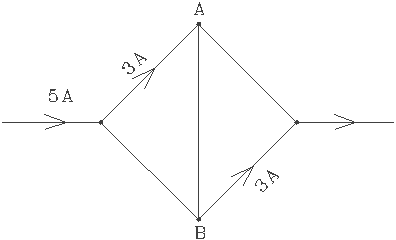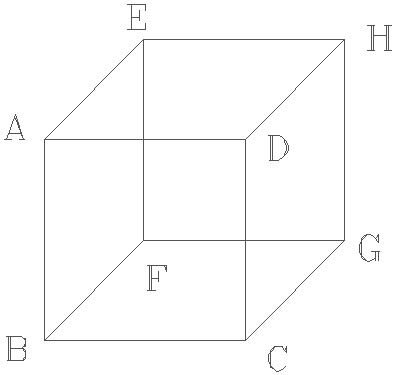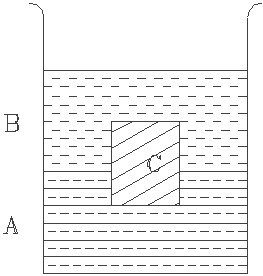SCHOLASTIC APTITUDE TEST 1995.
PHYSICS
| Time: ONE Hour |
Max. Marks: 60
|
- Answers must be written either in English or the
medium of instruction of the candidate in high school.
- There will be no negative marking.
- There are FOUR Sections. Answer all questions of a
section at one place.
- Use of calculators or graph papers is not permitted.
- Marks alloted for individual sections are as follows.
All questions in an individual section carry equal marks.
| Section I |
10 Marks |
| Section II |
20 Marks |
| Section III |
15 Marks |
| Section IV |
15 Marks |
SECTION I
- Velocity of light in centimeter per nanosecond is
_______________________ .
- Phase of vibrating particles varies linearly and
continuously when a wave travels in a medium. The linear
distance between particles differing in phase by p when a
wave of frequency 2 kHz travels at 350 m/s is a medium is
__________________.
- Density and youngs modulus of a certain hypothetical
material are 5 gm/cm3 and 2.0 x 1010 Pa.
Velocity of sound wave in this material is ______________.
- Field strength at a certain distance from a charge Q is E.
Field strength at one fourth of this distance from a
charge Q/4 is _______________ .
- Farad x Ohm expressed in the simplest form
equals _________________.
- A conductor carries a current vertically upwards.
Magnetic field due to this current to the East of the
conductor would be directed ____________________________.
- An electron is moving southward in a region of space
having a magnetic field directed vertically upwards. It
experiences a force towards _________________ .
- The change that takes place in the nucleus when a beta
particle is emitted is ________________.
- Two Deutrons combine to form a Helium nucleus. The masses
of Deuterium and Helium atoms are 2.0141 u and 4.0026 u
respectively. The energy yield in MeV per reaction is
________________.
- Electromagnetic radiations of wavelength 5 nm fall in the
_________________ region.
SECTION II
- A man moves 100 m 30° East of south then another
100 m 60° North of East. He is at a distance of
_________________ from the starting point.
- Displaced air exerts a vertcally upward force equal to
its own weight on a body. Force exerted by the displaced
air on a man of weight 60 kg is nearly
__________________ . ( Average density of a
human being is nearly same as that of water and density
of air is 1.3 gm/l. ).
- A mirror produces a magnified image of a linear object
placed 30 cm away from it 30 cm away from the object.
If the object is moved towards the mirror by 5 cm
the image moves by ____________.
- With velocity of light in vaccum chosen as a standard the
refractive indicies of water and glycerine are 4/3 and 8/5
respectively. If velocity of light in water is chosen as
standard refractive index of glycereine would be
___________________ .
- A source of sound of frequency 5 kHz is moving at 20 m/s.
The wavelength of waves in front of the source is
_______________________ .( Velocity of sound in air is
350 m/s ).
- Two wires of circular cross section are made of equal
amounts of same material and have their radii in the
ratio 1:2. The ratio of their electrical resistances is
___________________.
- Current between junctions A and B is
_______________ .
|
 |
- ABCDEFGH is a wireframe of twelve
conductors forming the edges of a cube.
Resistance between any two adjacent corners is R.
If the connection between A,E and C,G are removed
the effective resistance between B and D would be
________________.
|
 |
- A battery is rated 12 V and has a capacity of 12 Ah.
( 1 Ah means the battery can drive one ampere of current
for one hour or half ampere for two hours and so on..... ).
The energy it can deliver is _______________________.
- An electric lamp is rated 40 W at 200 V.
If the lamp is operated at 150 V its power would be
__________________.
SECTION III
The amount of heat Q flowing along the length of a rod in a
time t is given by the expression

Where q 2 and q 1 are temperatures of
hot and cold ends, A and L are area of cross section and length
of the rod, and K the coefficient of thermal conductivity ( a
constant for the given material ) of the rod. It is assumed
that there is no heat loss from the sides of the rod.
- A rod is 50 cm long and has a cross sectional area of 10
mm2. If coefficient of thermal conductivity of
the material of the conductor is 400 W/mK, the rate of
heat flow along the rod is _____________________.
- Temperature gradient is the rate at which the temperature
varies with the length of the rod and is a constant for a
rod carrying heat in steady state. If the temperature
gradient of a rod is 5 K/mm, the heat that flows in one
minute through a rod of cross sectional area 2 cm2
and coefficient of thermal conductivity 250 W/mK is equal
to
________________.
- When two rods are placed end to end the rate of heat flow
in them must be same. If two rods of equal areas of cross
section and having their lengths and coefficients of
thermal conductivities in the ratio 1:2 and 2:1
respectively have their free ends maintained at 350 K
and 300 K respectively, the temperature of the
junction will be _______________.
- The amount of heat that escapes from a house through a 3 m x 2 m
glass window pane of thickness 5 mm for a
temperature difference of 10 C° in one hour is
____________________. ( Coefficient of thermal
conductivity of glass is 0.008 W/cmK )
- One end of rod of cross sectional area 5 cm2,
length 25 cm, coefficient of thermal conductivity
210 W/mK is maintained at 100° C and the other end is
connected to beaker of water containing melting ice. The
amount of ice that melts in a minute is _______________.
( Latent heat of fusion of ice is 80 cal/gm )
SECTION IV
A body floats when the weight of the liquid it displaces
equals its own weight. Questions in the following section are
based on this principle.
- A block of ice (density 900 kg/m3) is floating
in a beaker of liquid (density 1200 kg/m3).
The fraction of its volume seen above the liquid is
____________________ .
- A body of density 1200 kg/m3 just floats in a
homogenous mixture of two liquids of densities 1000 kg/m3
and 1500 kg/m3. The ratio by volumes in which
the liquids are mixed is ____________________ .
- A cubical block of Aluminum has a cavity inside. If it
floats in water with 7/8 of it’s volume submerged in
water. The ratio of the volume of the material to the
ratio of its external volume is __________________ .
- A cubical block C floats as shown with one fourth
of its volume submerged in liquid A and the
remaining three fourths in liquid B as shown. If
density of liquid A is 600 kg/m3 and
that of B is 400 kg/m3, density of the
material of the block is _____________________.
|
 |
- A test tube containing some lead shot floats vertically
in a beaker of water. A few lead shots are removed from
the tube and dropped in to the beaker. The level of water
in the beaker _______________ .( Assume that the
test tube continues to float vertically after the lead
shots are removed from it ).
Home



